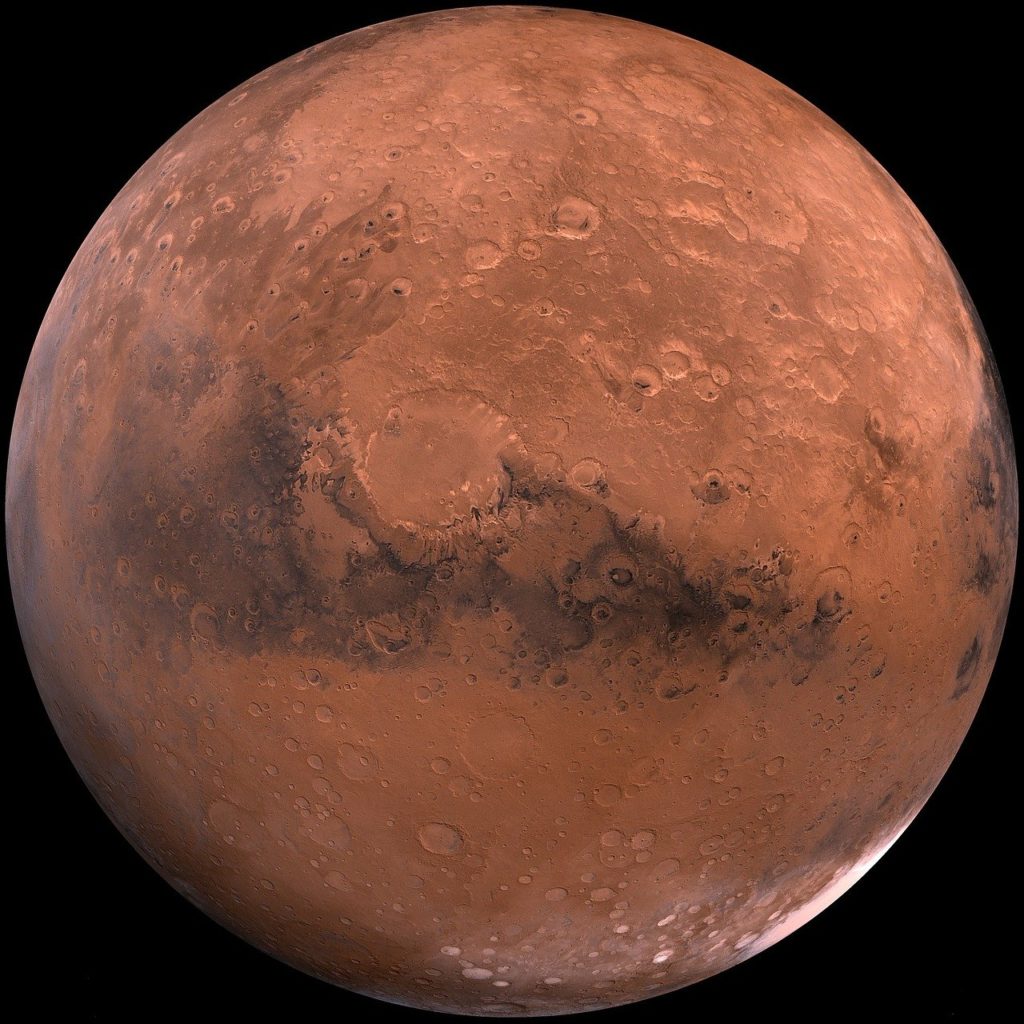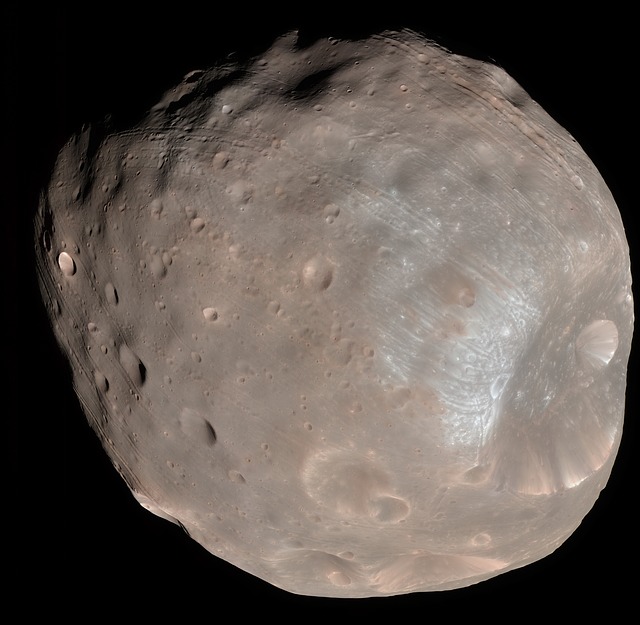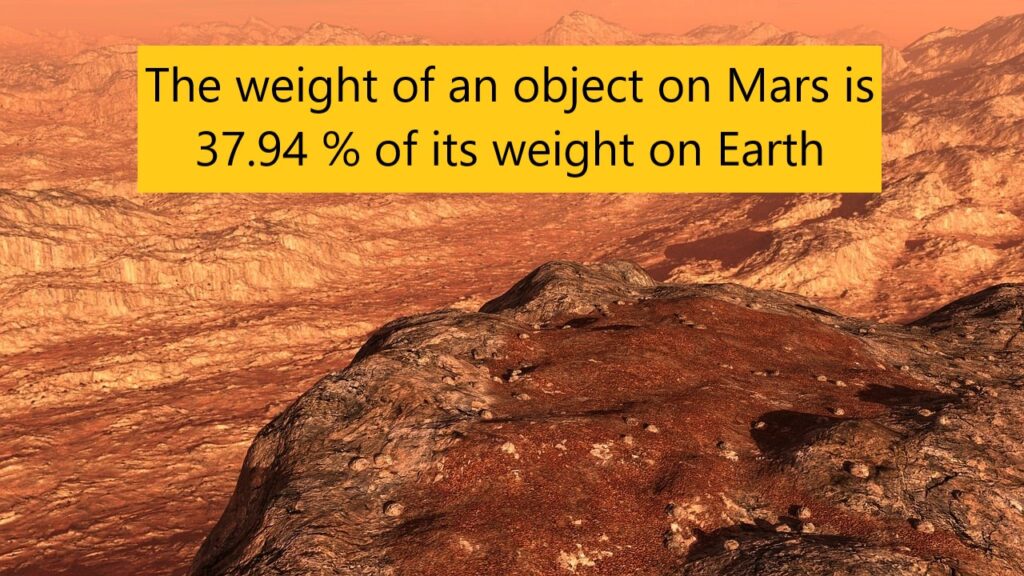Mars is the fourth planet from the Sun. It is the most studied planet of the solar system besides our Earth. Every space agency is working on at least one ambitious project on Mars exploration. Based on what we know so far here are some fun facts about Mars, the “Red Planet”.
Fun facts about Mars
Orbit of Mars
- Mars orbits at a distance of 142 million miles (average) from the Sun. 142 million miles is approximately equal to 1.5 Astronomical Units (AU). 1 Astronomical Unit is the average distance of Earth from the Sun. In other words, the distance of Mars from the Sun is 1.5 times the distance of Earth from the Sun.
142 million miles = 228 million kilometers
- Mars takes 687 Earth days to complete one revolution around the Sun.
1 Mars year = 1.88 Earth years
- The rotation speed of Mars around its axis is similar to that of Earth. It completes one rotation in 24.6 hours.
1 Mars day = 1.029 Earth days

Physical overview of Mars
- Unlike the giant planets that have no true surface, Mars is a terrestrial planet with a rocky surface.
- Mars has a mass that is only 10.74% of Earth’s mass. Its volume is 15.1% of the Earth’s volume.
Mass of Mars = 0.64171 * 10^24 kg
Mass of Earth = 5.9724 * 10^24 kg
Volume of Mars = 16.318 * 1010 km3
Volume of Earth = 108.321 * 1010 km3
- Mars has a dense core with a mean radius of about 1,700 km (1056 miles). The rocky mantle of thickness ranging from 1240-1880 km surrounds the core. The crust is 10 to 50 kilometers wide and is rich in elements such as iron, magnesium, calcium, etc.
- Mars’s diameter is slightly more than half of Earth’s diameter. In fact, Mars is the second smallest planet in our solar system after Mercury.
Mean diameter of Mars = 6,779 km
Mean diameter of Earth = 12,742 km
- Mars has almost the same surface area as Earth’s open land.
The atmosphere on Mars
- The atmosphere on Mars is very thin. The atmospheric pressure is less than 1% (0.63%) of Earth’s atmospheric pressure.
Atmospheric pressure on Mars = 6.36 mb
Atmospheric pressure on Earth = 1014 mb.
- The atmosphere is mainly Carbon Dioxide (CO2) – 95.32%; Nitrogen (N2) – 2.7%; Argon (Ar) – 1.6%; Oxygen (O2) – 0.13%; Carbon Monoxide (CO) – 0.08%.
The temperature on Mars
- The mean temperature on Mars is -65 degrees Celsius (-85 degrees Fahrenheit), much colder than Earth.
Mean temperature on Mars = -65 degrees Celsius
Mean temperature on Earth = 15 degrees Celsius
- Just like Earth, Mars also has polar ice caps. Both ice caps are made up of water ice and dry ice (solid Carbon dioxide).
How many moons does Mars have?
Mars has two moons – Phobos and Deimos. Phobos is the larger one. Deimos is about half the size of Phobos. In about 50 million years from now Phobos will crash into Mars. Both the moons are not spherical, instead, they are potato-shaped.


Does Mars have rings?
Mars has no rings. It is expected that in about 50 million years, rings will form around Mars, when Phobos crashes into it.
Additional facts about Mars
- Mars was named after the Roman God of War and destruction. The two moons are named after the horses that pulled the chariot of Mars.
- Mars has a reddish
colour because of the rusting (oxidation) of Iron present in rocks, dust, and regolith. - The tallest mountain in our solar system, Olympus Mons is on Mars. Olympus Mons is a shield volcano about 21 km high (height from datum) which makes it more than twice as tall as Mount Everest.
- Many studies and findings suggest Mars once had stable liquid water on its surface in the form of river valleys, deltas, etc.
- The surface gravity on Mars is very less compared with Earth.
Surface gravity on Mars = 3.71 m/s2
Surface gravity on Earth = 9.8 m/s2
If an object weighs 70 N on Earth, it will weigh 26.5 N on Mars.

- Mars rotational axis is tilted at 25.19 degrees with respect to its orbital axis. Mars has seasons just like Earth but they last twice as long.
- Eight spacecraft orbit Mars– Mars Reconnaissance Orbiter,
MAVEN, MarsExpress, Mars Orbiter Mission/Mangalyaan, ExoMars Trace Gas Orbiter, 2001 Mars Odyssey, Tianwen-1 orbiter, Hope orbiter (Emirates Mars Mission). Four spacecraft are on Mars’s surface – Curiosity rover, InSight stationary lander, Zhurong rover (Tianwen-1 lander), and Perseverance rover. - The dust storms on Mars can create a dusty atmosphere that lasts for months.
- Liquid water cannot exist for a long time on
Mars’s surface because of low atmospheric pressure. - The sunlight takes 13 minutes to reach Mars.
- Mars has no magnetic field.
FAQs
Mercury and Venus
No
Fourth
No, Mars’s diameter is slightly more than half of Earth’s diameter.
Yes, the mean temperature on Mars is much lower than Earth’s mean temperature.
Read more
Our future home!!
Hahaha!! probably yes.